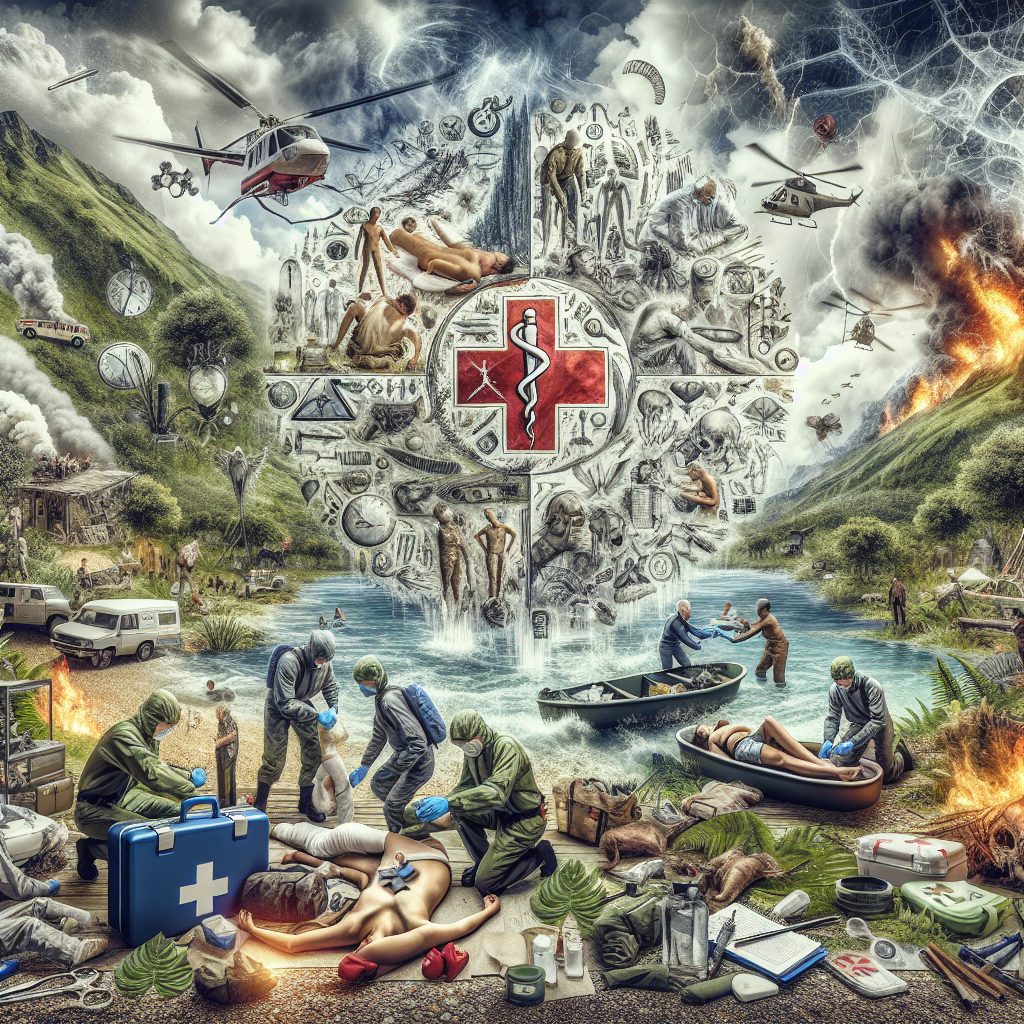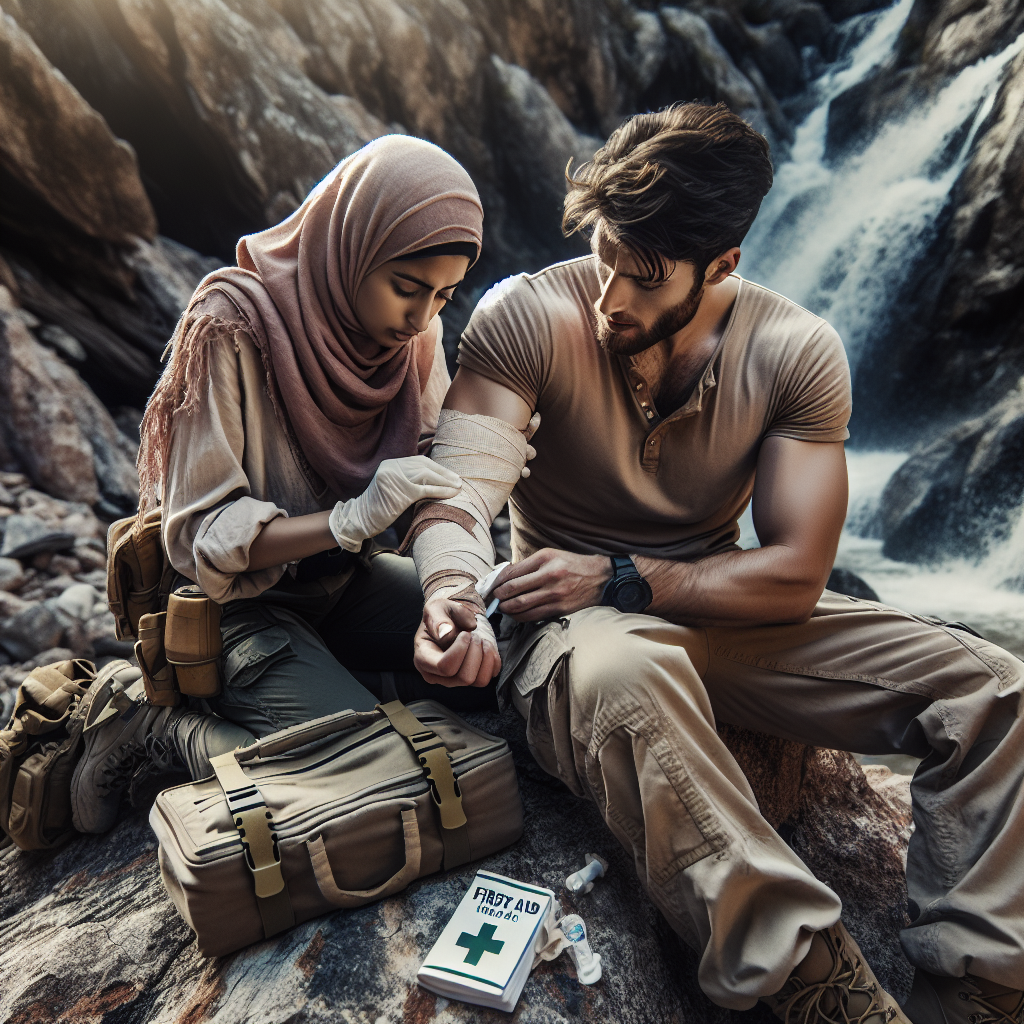Basic First Aid For Survival Situations. In times of unexpected emergencies and survival situations, having a basic understanding of first aid can be crucial in saving lives. Whether you find yourself in the wilderness, facing a natural disaster, or encountering a medical emergency, knowing how to assess and treat common injuries can make all the difference. This article will provide you with essential knowledge and practical tips on basic first aid techniques that can be applied in survival situations, enabling you to respond effectively and empathetically to those in need.
Assessing the Situation
Assessing the situation is crucial when faced with a survival emergency. It is important to remain calm and observe your surroundings to determine the extent of the problem. Take a moment to assess any potential dangers or hazards in the environment that could compromise your safety. Look for any immediate threats such as fire, falling debris, or unstable structures. Additionally, evaluate the condition of the injured person and gather information about their symptoms or injuries. This initial assessment will help you prioritize and determine the appropriate course of action.
Maintaining Personal Safety
Before you can provide first aid to others, it’s essential to ensure your own safety. Remember, you cannot help someone if you become injured or incapacitated yourself. Pay careful attention to your surroundings and be aware of any potential risks. Remove yourself from dangerous situations, such as unstable buildings or areas with ongoing threats. To protect yourself from bloodborne pathogens, always wear gloves when coming into contact with bodily fluids. Also, make sure to wash your hands thoroughly afterward. Remember, while it’s important to help others, your own safety is paramount.

Managing Bleeding and Wounds
In survival situations, bleeding and wounds are common. To effectively manage bleeding, you need to act quickly. Start by applying direct pressure to the wound using a clean cloth or your hand. If the bleeding does not stop, elevate the injured body part above the heart to help reduce blood flow. If possible, use a tourniquet as a last resort, but only if the bleeding is severe and cannot be controlled by other means. Once the bleeding is under control, clean the wound with clean water or a mild antiseptic solution. Cover the wound with a sterile dressing to prevent infection and apply a bandage to secure it in place.
Treating Fractures and Sprains
Fractures and sprains can occur in survival situations due to falls or accidents. To stabilize a fracture, gently support the injured limb with a splint or improvised materials, such as sticks or rolled-up clothing. Ensure that the splint is long enough to immobilize both the joints above and below the fracture. Don’t forget to pad the splint with soft materials to provide additional comfort. For sprains, remember the RICE method: Rest, Ice, Compression, and Elevation. Help the injured person rest and elevate the affected limb. Apply a cold compress or ice pack wrapped in a cloth and apply gentle compression with an elastic bandage. If the pain or swelling continues to worsen, seek medical help as soon as possible.

Dealing with Burns
Burns can occur from fires, scalding liquids, or contact with hot objects. The first step in treating burns is to remove the source of heat and immediately cool the affected area with cold running water for at least 10-20 minutes. This helps to ease the pain and prevent further tissue damage. Avoid using ice or very cold water, as it can cause more harm. Once the burn has been cooled, cover it with a sterile, non-stick dressing or a clean cloth to protect it from infection. Over-the-counter pain relievers, such as acetaminophen or ibuprofen, can help manage the pain. However, for severe burns or burns that cover a large area, seek professional medical help immediately.
Administering CPR
Cardiopulmonary resuscitation (CPR) can be a life-saving technique in survival situations, especially when someone’s breathing or heart has stopped. Begin by assessing for responsiveness. If the person is unresponsive and not breathing normally, start by giving chest compressions. Interlock your hands and place the heel of your hand on the center of the chest, then push hard and fast until help arrives or the person begins breathing again. If you are trained in CPR, combine chest compressions with rescue breaths. The American Heart Association recommends a ratio of 30 compressions to 2 breaths for adult victims. Remember, prompt CPR can greatly increase the chances of survival in an emergency situation.
Handling Choking
Choking can be a life-threatening situation, but there are steps you can take to help someone who is choking. First, assess the severity of the situation. If the person can cough or speak, encourage them to keep coughing to try and dislodge the object. If the choking person is unable to cough, speak, or breathe, immediately perform the Heimlich maneuver (abdominal thrusts). Stand behind the person and make a fist with one hand, placing the thumb side against the middle of their abdomen, just above the navel. Grasp your fist with your other hand and give quick upward thrusts until the object is expelled or professional medical help arrives. Be sure to call emergency services if the choking person remains distressed or loses consciousness.
Managing Hypothermia and Hyperthermia
In survival situations, exposure to extreme temperatures can lead to hypothermia or hyperthermia. Hypothermia occurs when the body loses heat faster than it can produce it, leading to dangerously low body temperatures. To manage hypothermia, move the person to a warm location, remove any wet clothing, and cover them in warm blankets or layers. Provide warm liquids (if conscious) and monitor vital signs for any signs of deterioration. Hyperthermia, on the other hand, happens when the body overheats due to prolonged exposure to high temperatures or strenuous activity. To manage hyperthermia, move the person to a cool, shaded area and remove excess clothing. Apply cool, damp towels or use a fan to promote heat loss. Encourage hydration with cool fluids (not ice-cold) and monitor the person’s condition for any signs of worsening.
Recognizing and Treating Shock
Shock is a life-threatening condition that can occur in survival situations as a result of severe blood or fluid loss, head injury, or other traumatic events. Common symptoms of shock include pale skin, rapid breathing, weak pulse, and confusion. If you suspect someone is in shock, it is essential to act quickly. Help the person lie down on their back and elevate their legs slightly, unless there are suspected fractures or spinal injuries. Cover them with a blanket to prevent heat loss and call for medical assistance immediately. Reassure the person and provide emotional support, as shock can be distressing. Avoid giving them anything to eat or drink, as they may require medical intervention.
Providing First Aid to Poisoning
In the event of a poisoning emergency, quick action is crucial. Start by assessing the person’s condition and identifying any potential sources of poisoning, such as chemicals, medications, or ingested substances. If the person is unconscious but breathing, turn them onto their side in the recovery position to prevent choking on vomit. If the person is conscious, try to gather information about what they ingested or were exposed to. Contact a poison control center or emergency services for guidance on how to proceed. Do not induce vomiting unless directed to do so by a medical professional. Keep any containers or substances involved in the poisoning for identification purposes. Remember, time is of the essence in poisoning cases, so seek medical help as soon as possible.
By having a basic understanding of first aid for survival situations, you can be better prepared to handle emergencies and potentially save lives. Remember, the key is to stay calm, assess the situation, and prioritize your own safety before providing assistance to others. While these skills are invaluable, it is important to seek professional medical help whenever possible to ensure the best possible care for the injured person. Stay proactive, continue learning about first aid techniques, and be prepared to lend a helping hand when someone is in need.
